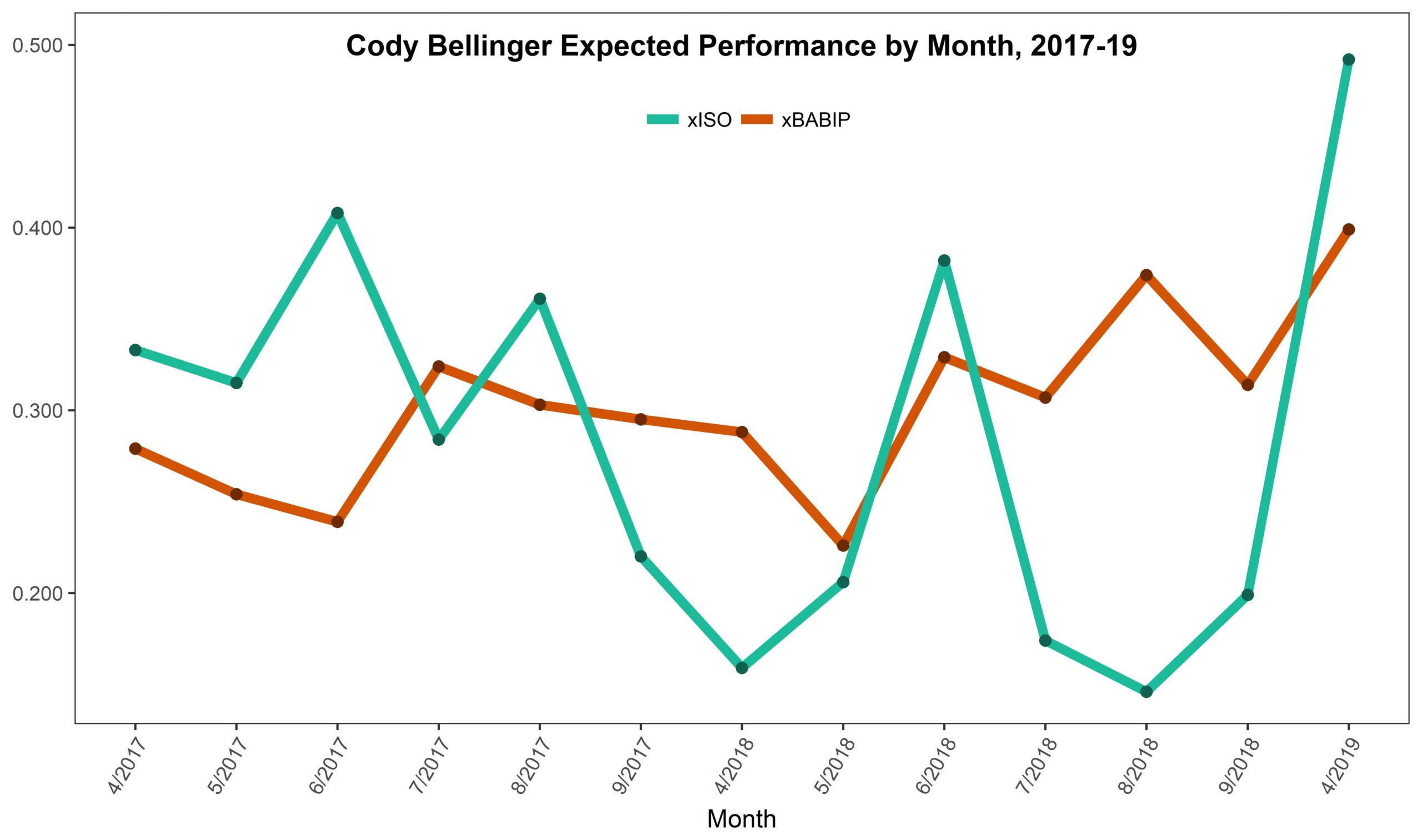BY ALEX VIGDERMAN
Sunday’s game between the Dodgers and Brewers featured a nice little moment between the two players dominating the National League with the bat, Christian Yelich and Cody Bellinger. Yelich, who would go on to win NL Player of the Week honors for his eight homers the rest of the week, was robbed of a ninth by Bellinger himself. I guess he’s really taking the early MVP race seriously.
After that performance (in a game which also included Bellinger hitting an un-robbed home run), the Dodgers right fielder sits with five Defensive Runs Saved (one of those at first base) and a .424/.500/.882 slash line. One could have expected him to have an excellent defensive season in right given that he patrolled center field for nearly 500 innings at an above-average rate in 2018. But after a remarkable rookie campaign in ’17 and a merely above-average year to follow it up, it wasn’t clear what to expect from him at the dish.
Let’s review the ups and downs through the lens of Defense Independent Batting Statistics (DIBS). Sports Info Solutions uses several pieces of information about each batted ball—from distance and hang time to handedness and whether there was a shift on—to determine the expected rate of singles, doubles, triples, and home runs for each batted ball. Add all those up and you get an expected batting line that corrects for things like bad luck and good defense.
In this plot, we’ll show Bellinger’s expected Batting Average on Balls in Play (BABIP) and expected Isolated Power (ISO, or slugging percentage minus batting average). These two metrics focus only on balls in play, helping to show his overall hitting ability as well as his power specifically.

Besides a surge in power last June, Bellinger’s xISO was higher in every month in 2017 than it was in any month in 2018. In fact, there was a downward trend in his power profile even within 2017. As 2018 wore on, though, Bellinger was able to maintain a positive trend in his xBABIP, suggesting that he was still hitting the ball hard, just not in a way that generates a lot of power. It’s worth pointing out here that, even at those low points around a .200 expected Isolated Power, we’re still looking at an above-average power profile. Just not otherworldly.
Through the first few weeks of the 2019 season, Bellinger has been demolishing the ball, to the tune of nearly a .400 xBABIP and .500 xISO. Because we’re still only a few weeks into the season and Bellinger’s only hit so many balls in play, we can feel comfortable that those rates won’t last long. But there are reasons to believe he could be back to his 2017 form, and perhaps better.
In particular, his batting eye has improved substantially. Plate discipline stats are really useful this early in the season because they’re on a per-pitch level instead of a per-plate-appearance level, and that’s where Bellinger’s made an obvious leap.
After chasing 28 percent of balls outside the strike zone the previous two years, he’s chased only 22 percent this year. He’s swung and missed at just 5 percent of pitches this year (21 out of 418) after whiffing on 13 percent in his first two seasons.
Teams have tended to stay on the outer edge of the plate against Bellinger, trying to avoid him yanking one out to right field and instead trying to get him to weakly ground into the shift. Eventually they have to come inside, though, and Bellinger has really made the most of those opportunities. On those pitches, he’s been incredibly selective, particularly in spitting on pitches too far inside.
Cody Bellinger Plate Discipline, Inner Third and Inside, 2018-19

What has he gotten out of that improved selectivity? How about a 2.134 OPS on 29 plate appearances ending with a pitch on the inner third and in, compared to .681 in 2018. That’s also more than 900 points higher than his performance against pitches on either the outside or middle.
Not only has he addressed what was a hole in his game last year, he’s taken advantage of pitches he should crush. In 2018, he whiffed on 18 percent of his swings and had a .914 OPS against pitches in the zone and belt-high. This year, he’s only whiffed once in 35 swings and has a 2.429 OPS against those same pitches.
Sure, Christian Yelich has an MVP trophy in his case already and is on an incredible home run pace. But if early returns are any indication, the guy who robbed him of a home run on Sunday might rob him of something else come October.

